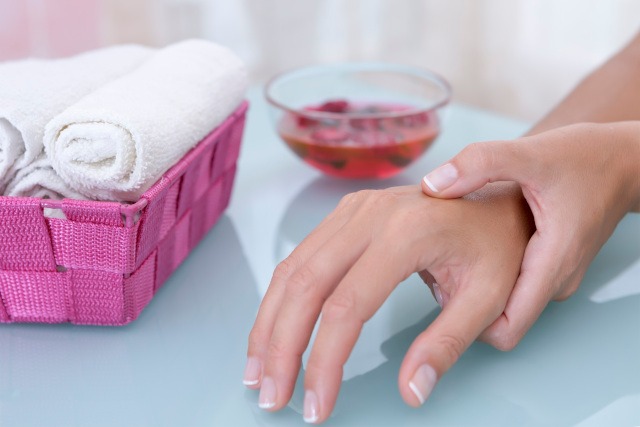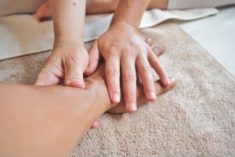
 This is the first in a series of three articles about Shiatsu.
This is the first in a series of three articles about Shiatsu.
This article explains what Shiatsu is, and why Shiatsu could contribute to ensuring holistic health in the twenty-first century.
The second will define Shiatsu both as bodywork and energy medicine from the perspective of recent scientific findings on the fascia or connective tissue.
The third article will introduce the concept of “humanitarian Shiatsu” and advocate for its inclusion in psychosocial programmes that address trauma, anxiety and stress in children and adults living in humanitarian settings, as well as the people who help them.
The 2021 Nobel Prize for Medicine or Physiology was awarded to two scientists, David Julius and Ardem Patapoutian “for their discoveries of receptors for temperature and touch.”
These receptors (ion channels) are prominent components of our nervous system; they convert stimuli (such as temperature and touch) into electrical impulses and play an important role in maintaining the functions of muscles and nerve cells as well as a variety of physiological processes such as respiration, bladder control and blood circulation. One ion channel, named PIEZO2, was found to be “essential for the sense of touch and play a key role in the critically important sensing of body position and motion, known as proprioception.”
The Nobel Academy decided to award these two scientists because their discoveries help us to understand in a very fundamental way how our bodies interact with the world around us. Also, and more importantly perhaps, for what these discoveries may mean for improving existing treatment protocols (such as those for chronic pain) or finding novel ways of curing a wide variety of illnesses.
Ground-breaking as these discoveries may seem, it does not require deep scientific knowledge to understand and feel the effect of a hug, or the squeeze of a hand offered in sympathy to someone who has lost a loved one or is suffering from stress or burnout. In a similar vein, we do not question why a person who was deprived of loving touch and affection in their childhood would suffer from depression in later life. Touch is the most basic of all our senses and a loving touch from a parent is vital nourishment for physical, mental, and psychological development especially in the early years of life.
Shiatsu, which originated in Japan in the 1920s, literally translates as “finger pressure.”
It is a form of therapeutic touch aimed at balancing energy in the body.
It works on the premise that the “body and mind which work as one is created by, maintained by and works by energy” (Saul Goodman 1990, p. 11). This energy in Oriental medicine is called qi or ki, which means vital energy or life force. In the body, qi circulates along well-defined channels called meridians, and along these meridians are points called tsubos. Here it is believed that electromagnetic energy is particularly active (Goodman 1990, p.11). In Shiatsu, these points are experienced when pressure is applied at a certain depth by the quality (full or empty) that they present to the practitioner or the physical response (a pulse) when touched. “Scientific research has proven that the meridians and tsubos are intimately connected to the body’s organs and life systems” (Goodman 1990, p.12) and the energy flowing through them are vital for the functioning of these organs and systems. It is interesting to note that the meridians of Shiatsu and acupuncture closely resemble the meridians of the fascia or connective tissue as revealed in a fascinating study undertaken by Thomas Myers and featured in his wonderful book, Anatomy Trains, Myofascial Meridians for Manual Therapists and Movement Professionals .
 An unbalanced condition due to trauma (physical, emotional), poor diet, a sedentary lifestyle or burn-out manifests itself in the body as stiffness, discoloration of skin, change in temperature, pain, and other physical and non-physical symptoms.
An unbalanced condition due to trauma (physical, emotional), poor diet, a sedentary lifestyle or burn-out manifests itself in the body as stiffness, discoloration of skin, change in temperature, pain, and other physical and non-physical symptoms.
Through various Shiatsu techniques of manipulation, such as pressure, stretching, tonifying to stimulate energy and sedation to diminish energy, the body’s balance and health are restored. Shiatsu as a holistic form of therapy is, however, much more than its techniques.
Zen Shiatsu, a central aspect of which is the relationship between the giver and receiver, was developed in the 1950s by Shizuto Masunaga. The heart as the balancing centre of energy produces the strongest magnetic field in the body. In the practice of Shiatsu what is in the heart is communicated through the hands. The hands are therefore an extension of the heart (Goodman, 1990, p. 16). The intention is important and this is articulated in silence by the giver in preparation for the healing encounter.
Closely related to intention is empathy, compassion, and profound respect for the self-healing capacity of the receiver of Shiatsu. In Shiatsu practice, one hand supports and listens while the other is actively working on the meridians. That space between the two hands is the whole area where the energy field is being restored and balanced, which then resonates and spreads out to the organs and systems of the body (Carola Beresford-Cooke 2016, p. 22).
That healing encounter is one of deep connection between giver and receiver where both benefit in their humanity.
The world of the twenty-first century is proving to be dramatically different than previous centuries, incomparable even to the one that immediately precedes it. Bewildering is how many would describe it given the enduring global effects of COVID, the impact of climate change leading to existential fear among many especially the younger generations, and the rapid advances in and use of communications technology, among other things. All of which threatens to sever the ties we have with each other, fragment our communities further and tear humanity apart.
It was in the midst of this changing environment that the Nobel Academy decided to award the two scientists mentioned above for their discovery of the fundamental mechanics of touch and temperature in the body. Additionally, there is more attention paid now to pioneering studies undertaken even two centuries ago are only now being unearthed and appreciated for their revolutionary perspectives in science, medicine, and human anatomy. Once labeled primitive and ancient, these studies prove that natural systems work not in separate and specialized ways, but as a whole, towards harmony and balance.
To quote Saul Goodman, an expert of Shiatsu and energy medicine;
“Real Shiatsu is like that. It is an expression of making balance, the basic activity of nature. It is approaching life with deep respect and acknowledging that all … are interconnected and interdependent” from the micro-world of atoms and molecules to the largest systems in the body and in nature.
If this is indeed the case, then Shiatsu has something valuable to offer in the twenty-first century.
Sources:
Goodman Saul, The Book of Shiatsu, Avery Publishing Group, New York, 1990
Beresford-Cooke Carola, Shiatsu Theory and Practice, Third Edition, Churchill Livingstone, Elsevier, London, UK, 2016
Further reading:
Le massage thérapeutique : une clef du bien-être ! par
Images:
Photo by Conscious Design on Unsplash
Photo by Pier Monzon on Unsplash